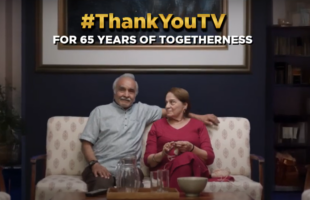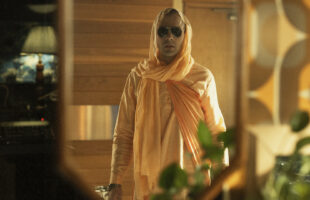In May 1959 New Zealander’s sat down to watch their first experimental broadcasting. Originally available only to households in the Auckland area, programmes were limited to two hours a week on Monday nights. Dr Jonathan Coleman, Minister for Broadcasting says viewers only saw what the then NZ Broadcasting Service could beg borrow or steal. “There was no money for new programs, so in addition to test patterns, Auckland viewers enjoyed clips of old National Film Unit newsreels and whatever free content the broadcasting service could get,” he says. Based on the success of those broadcasts, in January 1960, the New Zealand government decided to introduce television as an entertainment medium – and since then, NZ audiences have seen dramatic changes in television broadcasting. “I think it would be fair to say that the average television viewer in 1959 would be utterly amazed by the quantity, quality, range and accessibility of the content New Zealanders of the 21st century take for granted,” says Dr Coleman. “Today we can watch high definition, colour programmes across multiple channels, both free-to-air and pay, 24 hours a day. We can ‘time-shift’ to watch content when it suits us, skip advertisements, pause to let the cat out, mute the boring bits, add captions, and pre-record all our favourite programmes at the push of a button.” According to recent figures, New Zealand viewing audiences still prefer TV as their main entertainment medium. Top ranking shows are a mixture of local and international productions and rated year to date TVNZ’s TV1 & TV2 are the most popular channels. With no discernable viewing trends, viewers prefer a mixture of genres, but local FTA channel TV3 has proven that locally produced shows are popular. TV3 has consistently had two shows in the top 20, one of which was a locally produced show – Outrageous Fortune. So what are viewers watching? Jason Rutherford, media director NZ, JWT says FTA (TVONE, TV2 and TV3) channels have similar viewing lineups. “They all have similar US output deals. TV3 has a very crime based schedule – CSI, NCIS. Whereas, TV2 and TV1 show more US drama.” Rutherford also says PTV is making inroads on FTA audiences. “Sky TV has sole rights to both summer and winter games and also the 2011 Rugby World Cup. Sky’s audience numbers will definitely increase due to better output deals”. Online viewing is rapidly becoming trendy and mobile TV technology is advancing, but services and viewers are experiencing problems due to issues with NZ broadband. The NZ Government has plans in place to increase bandwidth and speeds in the near future. Advertising revenue is suffering some losses and TV revenue is eight to 10 percent down year on year. Although digital has shown a slight three to four percent growth. FTA makes up 90 percent of advertising revenue and PTV makes up 10 percent. The biggest development in NZ TV and media is the upcoming battle between TiVo and Sky TV – MySky. There are some questions over the cost of TiVo (which has not been released) and if current broadband speeds can support it. But the biggest question industry players are asking – what will Sky do to match TiVo’s offer? TiVo is expected to be in NZ households by Christmas 2009, courtesy of Hybrid Television Services (ANZ) Pty Ltd. Following the successful Australian launch of TiVo in July 2008, Hybrid Television Services are bringing the “watch what you want, when you want” concept to New Zealand households. Robbee Minicola, CEO of Hybrid Television Services says, “The TiVo media device grows in value, automatically updating the service via the broadband connection to provide an outstanding entertainment experience,” adding that New Zealanders will have access to new products and services without having to commit to ongoing monthly fees. TVNZ owns one-third share in Hybrid Television Services and according to Jason Paris, head of emerging business for TVNZ, “The rapid adoption of TVNZ ondemand showed us that New Zealanders are keen to have more control over their TV viewing. TiVo gives viewers an unprecedented level of control over their favourite programs in an incredibly simple way”. Yet all is not rosy for the ‘TiVolution’. According to a June 2009 article in the NZ Herald, advertising strategists at Total Media Counsel say that time-shifting technology will have a big impact on how people watch television. Advertisers may be the biggest loser due to a down side that free-to air channels do not highlight – PVR/DVR users fast forward through the adverts. This may undermine TiVo’s advertising value. SKY TV already has time-shifting technology available through MySky HDi and subscribers to this service will not be able to access TiVo. Meanwhile SKY has entered into an exclusive relationship with Vodaphone. This exclusive deal will give Vodafone customers access to full SKY TV services via their home phone and internet accounts. Vodafone is the first fixed line provider in New Zealand to offer this service and will bundle all SKY’s digital channels including MY SKY HDi with fixed line voice and internet services. According to Charlie Clementson, Vodafone’s head of media & entertainment this is another step in their total telecommunications strategy that offers customers what they want. “This is a great step for our fixed line business; our ongoing partnership with SKY is giving our customers more access to content services in more places. This is about letting our customers have the choice about their Pay TV from SKY, whether it is on their Vodafone 3G mobile phone or now Direct To Home via SKY’s satellite service.” And recent figures released by Nielsen Media for Q2 2008 to Q1 2009 suggest online television is gaining popularity. In June 2009, 12 percent of New Zealanders went online to view their favorite shows and growth is expected to increase. Over a three month period TVNZ’s most popular show, Shortland Street averaged 200,000 online viewers per month, followed by Gossip Girl with 80,000. Sorority Forever, TVNZ’s new original online series made available from Warner Bros. International Television Distribution was launched in November 2008 and came in third over a two month period with 25,214 hits. The series, starring home grown talent Jessica Rose consists of 40 episodes (two-three minutes in length) has proven popular with online viewers. Yet, in January 2009 the show saw a dramatic decline in viewers; only receiving 15,491 hits. But these drastically different figures for Jan 2009 are due to the TVNV practice of Chaptering, explains Amy Todd, digital publicist – TVNZ. “Chaptering involves breaking out shows as per their on-air structure. For example; If Sorority Forever was 30 minutes long it would have been separated out into three ‘chapters’. If someone viewed all three, that would have counted as three Stream Views (SV); effectively inflating the number of SV’s. TVNZ discontinued this practice in January 2009, now if someone watches any 30 minute show it counts towards one SV only. TVNZ discontinued this practice in January 09. From January onwards if someone watches any 30 minute show it counts towards one SV only.
Ad – Before Content
Related Articles
Massimo Righini appointed Chief Operating Officer of Casta Diva Pictures
ZEE5 Global annoucnes Black Friday deals of Up to 30% Off in key markets
PSI Broadcasting stays ahead of the game with PlayBox Neo MultiPlayout channel and branding systems
All3Media International prepares to showcase an array of formats and finished shows at Asia Television Forum 2024
Publicis India unveils heartwarming “Thank You TV” campaign for ZEE TV
Sphere Abacus sells true crime feature documentary Murder & Madness: The Cult Conspiracy to Prime Video






